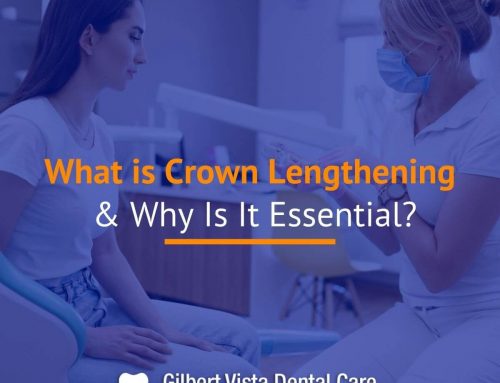Restorative Dentistry in Gilbert: What You Need to Know About 21st Century Dental Work
While preventative dentistry is obviously much better, what happens when you need restorative dentistry?

Your Dentist in Gilbert Can Help Bring Your Smile Back With Restorative Dentistry | (480) 503-5467
Types of Restorative Dentistry
We can’t stress this enough. Having preventative dentistry done is obviously a better choice.
With that said, however, some people have crossed the line and require restorative dentistry instead. So what is restorative dentistry? Restorative dentistry fits into several categories which are:
- Fillings
- Tooth Extractions
- Crowns
- Bridges
- Root Canal
We will explore each of these options in this article. Let’s start with the worse case scenario first: a root canal.
What Is a Root Canal?
When a dentist says the words: “You’re going to need a root canal,” most patients cringe in almost reflexive fear. Yet a lot of people don’t even know what a root canal is. What is a root canal? According to the American Association of Endodontists web page:
“There’s no need to be worried if your dentist or endodontist prescribes a root canal procedure to treat a damaged or diseased tooth. Millions of teeth are treated and saved this way each year, relieving pain and making teeth healthy again. Inside your tooth, beneath the white enamel and a hard layer called dentin, is a soft tissue called pulp. This tissue contains blood vessels, nerves and connective tissue, which help grow the root of your tooth during its development. A fully developed tooth can survive without the pulp because the tooth continues to be nourished by the tissues surrounding it. It’s necessary to have endodontic or root canal treatment when the inside of your tooth (the pulp) becomes inflamed or infected as a result of deep decay, repeated dental procedures, faulty crowns or a crack or chip in the tooth. Trauma to your tooth may also cause pulp damage even if the tooth has no visible chips or cracks. If pulp inflammation or infection is left untreated, in can cause pain or lead to an abscess. When you undergo a root canal or other endodontic treatment, the inflamed or infected pulp is removed and the inside of the tooth is carefully cleaned and disinfected, then filled and sealed with a rubber-like material called gutta-percha. Afterwards, the tooth is restored with a crown or filling for protection and will continue to function like any other tooth.” [VIEW SOURCE]
As you see, root canal isn’t as bad as you might think. In the next portion of this article we will cover tooth extraction, and why sometimes, it becomes medically necessary.
For now, just know that restorative dentistry has many options, and as your dentist in Gilbert, I’ll be happy to explore them with you.
Gilbert Vista Dental Care
2451 East Baseline Road #210
Gilbert, AZ 85234
(480) 503-5467
Visit Our Site






